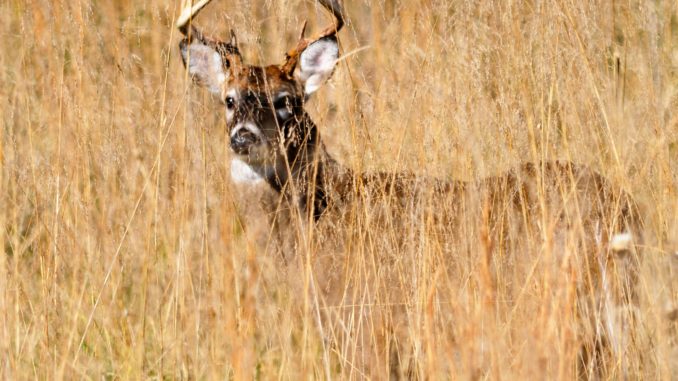
Whitetail deer, particularly bucks, use their noses to avoid danger, and to find food and girlfriends. Scent knowledge is never more important to them than during the pre-rut period. Successful deer hunting depends on defeating a deer’s nose and eyesight, in addition to knowing when and where they travel.
Here are a few tips for beating a deer’s top defense mechanism:
• Scent control: Use odorless soap to shower and wash hunting clothes. Air-dry clothes outside, not inside an electric dryer. Sprinkle baking soda inside shoes to kill foot odor. If you wear leather shoes, make sure to avoid stepping on food, oil or gasoline. Rubber-soled pack shoes or rubber boots are preferable. Never go into a restaurant to eat breakfast or smoke tobacco products while wearing hunting apparel.
• Always note wind direction at the stand you will hunt. If the wind’s wrong, go to another stand. Determine from your back yard which way the wind’s blowing at your stand (Hint: swirling winds may mean a different wind direction at your yard and stand).
• Buck urine is a good attractant and cover scent during the pre-rut. Dominant bucks will try to scent a challenger in their territory and may come running if they detect buck urine.
• Glass crop fields from a distance in the evenings before the season to get an idea of what deer are coming out of the woods.
• If you decide to use antlers or rattling sticks, make sure your hands aren’t exposed. Deer can see the slightest movements, even if you’re in a tree stand.
• Wear camouflage face masks and gloves along with the rest of your hunting clothes, including the required blaze orange clothing. Nothing shines like a human face.
• Hunt near falling white oak acorns.
• Know the terrain where you place a tree stand. Deer trails between bedding and feeding areas are always good spots. Funnels between woodlots are good. Never enter a bedding area.
• During afternoon hunts, make sure wind direction generally is from a bedding area toward a food source. A crosswind that bisects bedding and feeding areas is best but rare.
• For afternoon hunts, be in your stand by 2 p.m. Deer usually begin to move around 3 p.m. Arriving at a stand at 2 p.m. gives the woods an hour to settle down.
• If you’re hunting around rubbed trees, check the height of a rub, because the higher off the ground the rub, the taller the buck stands — and an increased likelihood such a deer has trophy body size and antlers.
• When the big boy walks out, concentrate on one hair behind his shoulder, take a deep breath, let out half of it, then squeeze the trigger release on a bow or a gun. Remember to breathe again.Don’t blow months of preparation by letting deer have advance notice of your presence in the woods.




Be the first to comment